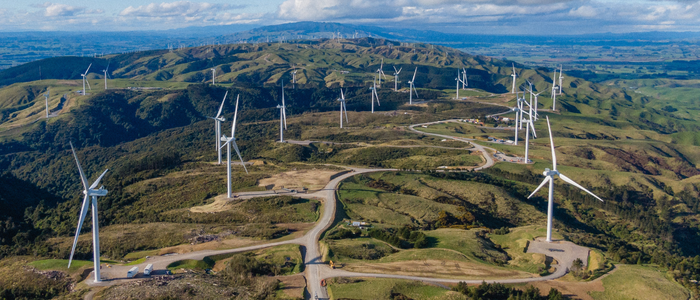Eye on electricity
Wind power sets new records
- Generation
2023 has seen a flurry of new wind generation connect to the grid and begin operation. This has increased capacity and set new records for the share of generation coming from wind.
New wind generation added and more to come
The first new wind farm to join the grid was Aotearoa New Zealand’s biggest – the 221MW Turitea wind farm near Palmerston North in June. This was followed a few months later by the first new wind farm in the South Island in almost a decade – Kaiwera Downs Stage 1, which added another 43MW. The most recent one is also the first wind farm in the Hawkes Bay region – the 176MW Harapaki wind farm – which sent its first generation to the grid this week.
Based on announcements by Mercury, Meridian and Manawa (among others), more wind farms are expected to be built in the next few years.
New wind generation milestones
The new capacity from wind farms is setting a range of new milestones in the electricity market. Last week (starting 12 November), total wind generation across the week reached more than 100GWh for the first time. That’s an average of 598MW of generation for every hour in the week – pretty good average when the total large-scale (30MW+) capacity across New Zealand is currently 1,059MW.
The share of weekly generation coming from wind is also going up, reaching a record 13.3% last week. While the actual share varies from week to week, the average share in 2022 was 6%. The increasing share comes from a combination of more wind generation capacity and lower electricity demand as the weather warms up. As more of Harapaki’s wind generation comes online and electricity demand eases during summer, the share of wind generation will continue to set new records.
Generation variability is an ongoing challenge
It’s worth keeping in mind that there’s a lot of variability in wind generation that still needs to be managed. While the average wind generation last week was the highest it’s ever been, there were a few times when it was a lot higher or lower than expected – as much as 200MW above or below forecast.
The Electricity Authority Te Mana Hiko is working with electricity market participants to improve the accuracy of intermittent generation forecasts to help manage and minimise these challenges. We’re working to increase coordination and information sharing to allow participants to react faster to variations in intermittent generation to better meet the demands of our power system.
Image: Turitea wind farm, Mercury Energy
Related News
New generation investment dashboard published
Our new generation investment dashboard provides a more dynamic and detailed picture of planned generation projects in New Zealand.
Centralised wind and solar forecaster contract awarded
The Electricity Authority has awarded a contract to provide centralised wind and solar forecasting services to DNV Services.
Battery energy storage systems roadmap released
We have published a draft two-year roadmap that sets out our work to support investment in battery energy storage systems (BESS). BESS will become increasingly…
